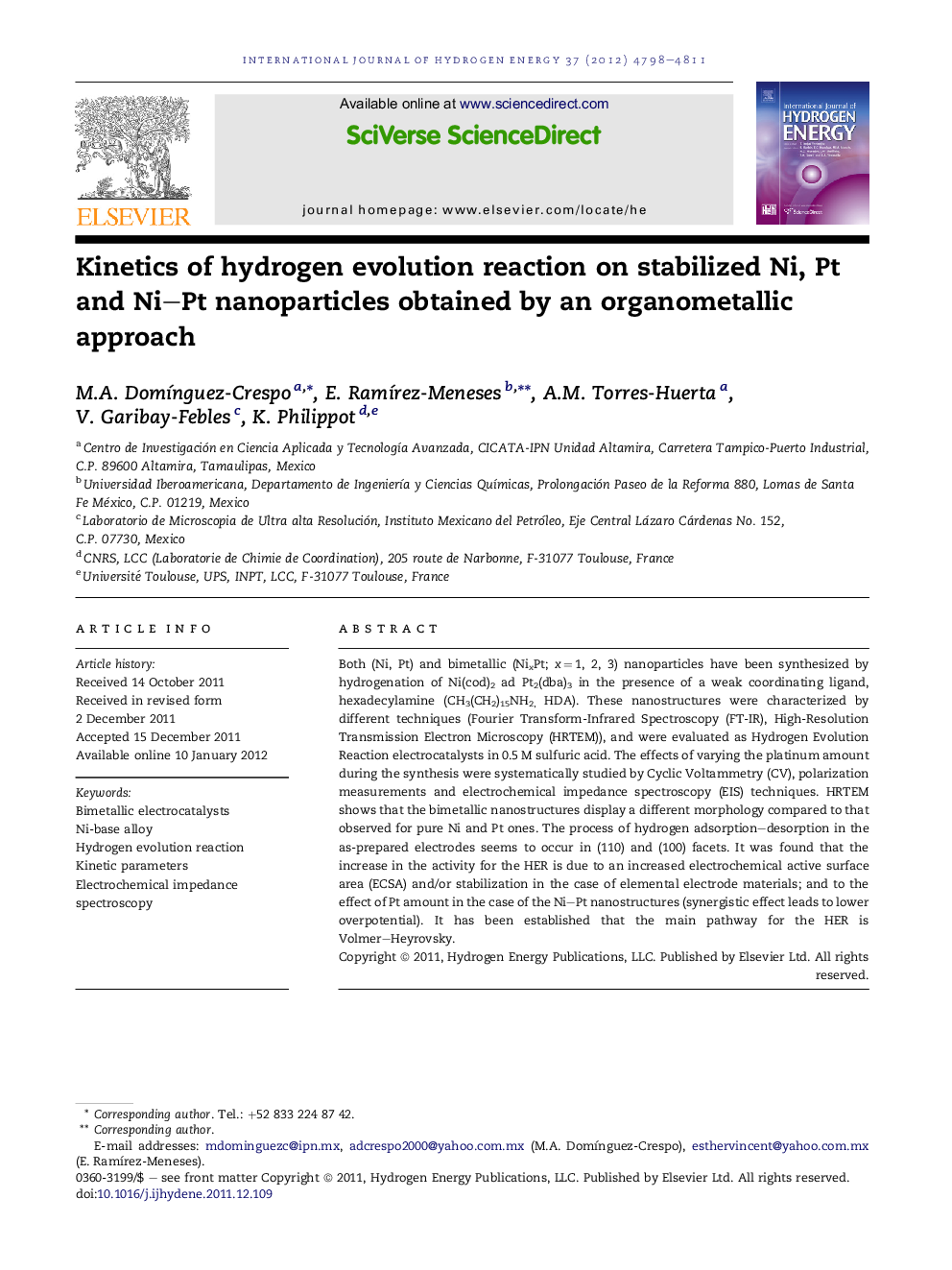| Article ID | Journal | Published Year | Pages | File Type |
|---|---|---|---|---|
| 1271497 | International Journal of Hydrogen Energy | 2012 | 14 Pages |
Both (Ni, Pt) and bimetallic (NixPt; x = 1, 2, 3) nanoparticles have been synthesized by hydrogenation of Ni(cod)2 ad Pt2(dba)3 in the presence of a weak coordinating ligand, hexadecylamine (CH3(CH2)15NH2, HDA). These nanostructures were characterized by different techniques (Fourier Transform-Infrared Spectroscopy (FT-IR), High-Resolution Transmission Electron Microscopy (HRTEM)), and were evaluated as Hydrogen Evolution Reaction electrocatalysts in 0.5 M sulfuric acid. The effects of varying the platinum amount during the synthesis were systematically studied by Cyclic Voltammetry (CV), polarization measurements and electrochemical impedance spectroscopy (EIS) techniques. HRTEM shows that the bimetallic nanostructures display a different morphology compared to that observed for pure Ni and Pt ones. The process of hydrogen adsorption–desorption in the as-prepared electrodes seems to occur in (110) and (100) facets. It was found that the increase in the activity for the HER is due to an increased electrochemical active surface area (ECSA) and/or stabilization in the case of elemental electrode materials; and to the effect of Pt amount in the case of the Ni–Pt nanostructures (synergistic effect leads to lower overpotential). It has been established that the main pathway for the HER is Volmer–Heyrovsky.
► Study of stabilized Ni–Pt nanostructures on hydrogen evolution reaction. ► Changes in the shapecorrelated with Pt amount. ► The stabilization of bimetallic NiPt nanostructures facilitates the HER.
